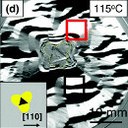
Applying a localized pressure improves the control of metamagnetic materials at the nanoscale. Researchers at the Universitat Autònoma de Barcelona, the Institute of Materials Science of Barcelona and the ALBA Synchrotron, in collaboration with the UB and ICN2, have developed a new technique to locally modify the properties of a metamagnetic material. The method consists in applying local pressure to the surface of the material using nanometric needles and allows a much more easy and local modification than current methods. The research opens the door to a more accurate and precise control of magnetic materials and allows to improve the architecture and capacity of magnetic digital memories.

Till the 21st of June, undergraduate students interested in doing an internship at ALBA can submit a proposal for covering one of the 14 available positions.

Two months left for sending proposals to the fifth CALIPSOplus call for SMEs. Till 29th July 2020, small and medium companies can ask for funded beamtime in different European light sources thanks to EU CALIPSOplus project.
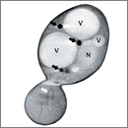
A research team lead by the French National Research Institute for Agriculture, Food and Environment (INRAE) has developed a new multimodal imaging method that combines different microscopy techniques used at the ALBA synchrotron and the French SOLEIL synchrotron. This method was used to gather complementary information about the composition and structure of lipid droplets in yeast cells. One of its advantages is that it does not employ any chemical markers or fixing agents, which can potentially damage cells.

LEAPS facilities are joining forces in front of the coronavirus pandemic, offering their capacities to the whole scientific community. Several facilities have opened calls for rapid access to dedicated beamtime for prioritizing the research on the SARS-CoV-2 virus, its therapy and vaccine, above the rest, aiming at minimizing the time from proposal to paper submissions.
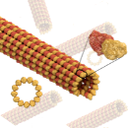
Researchers have found that addition of paclitaxel (a type of antitumoral drug) to microtubules alters their structure. This compound modulates the material properties of microtubules by converting destabilized growing microtubule ends into regions resistant to depolymerisation, eventually leading to cell death. Results were obtained at the NCD beamline of the ALBA Synchrotron.
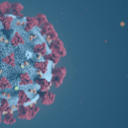
The X-ray Science Facilities, with the intent to further coordinate and strengthen their support of scientific research and solutions to the COVID-19 pandemic, assembled for a remote access video SR20 Summit on 23-24 April 2020 and adopted the following Action Plan.
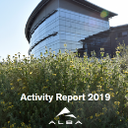
The ALBA Synchrotron has published its annual report. This document covers the most remarkable activities of 2019, a selection of scientific highlights, technology reviews and facts & figures of the facility last year.
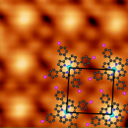
The properties of topological insulators are mostly dominated by their peculiar topological surface electronic states. Interfacing them with magnetic materials and harnessing their interactions can give rise to interesting quantum and topological phenomena that have inspired novel spintronic applications. Led by researchers from the Catalan Institute of Nanoscience and Nanotechnology, an international team with collaborators from CFM-San Sebastian, ETH Zurich, ISM-Trieste and the ALBA Synchrotron, have demonstrated that it is possible to balance electronic and magnetic interactions between single magnetic ions and topological surface states by coordinating the ions with different organic-ligands, leading to possible new routes to manipulate the electron spin at the interface with a topological insulator.

The IT Systems Section of the Computing & Controls Division of ALBA has started up a virtual server to process data for the folding@home international project, which is joining researchers around the world working to better understand the 2019 Coronavirus to accelerate the open science effort to develop new life-saving therapies.

With the support of the European project CALIPSOplus, SMEs companies working with COVID-19 projects are encouraged to apply access to light sources in an easy, rapid and confidential way. Interested companies can send the proposals using the "wayforlight.eu" portal. The current call is open till 29h July 2020.

The Spanish Vacuum Society has awarded Prof. Salvador Ferrer Fábregas for his contributions to the study of the surfaces properties and the development of characterization experimental techniques as well as the creation and operation of the ALBA Synchrotron.
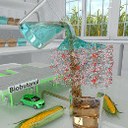
Researchers from the ICMAB-CSIC have discovered a MOF that allows for the separation of butanol from acetone-butanol-ethanol mixtures that are extracted from the fermentation process of biomass feedstock, as part of the standard industrial process to produce biofuels. This new compound, mCB-MOF-1, shows promising results compared to other methodologies or other MOF materials. Data obtained at both ALBA beamlines, XALOC and NCD-SWEET, had a key role in this study, as well as their scientists support and collaboration.
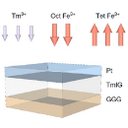
A chiral exchange interaction denominated Dzyaloshinskii-Moriya interaction (DMI) is responsible for exotic chiral and topological magnetic states such as spin spirals and skyrmions. A study lead by researchers at the Department of Materials Science and Engineering at Massachusetts Institute of Technology (US) reveals that in perpendicularly-magnetized iron garnets, rare-earth orbital magnetism gives rise to an intrinsic spin-orbit coupling generating interfacial DMI at mirror symmetry-breaking interfaces. The results have been published in Nature Communications.
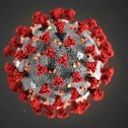
The ALBA Synchrotron beam is back since Friday 17th April, under a special operation mode devoted to research projects related to the SARS-CoV-2 virus.
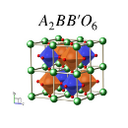
A recent study has shown that that double perovskite materials based on osmium, display octupolar order at low temperatures. This provides the first comprehensive framework for understanding how such an octupolar phase might be stabilized and identified in d-electron double perovskite materials.
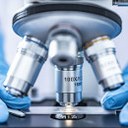
The ALBA Synchrotron will host two new major experimental facilities, one dedicated to materials science, valued at 4.1 million euros and led by the Catalan Institute of Nanoscience and Nanotechnology (ICN2), and another meant for molecular biology, valued at 1.7 million euros and headed by the Institute of Molecular Biology of Barcelona (IBMB-CSIC). The new platform also counts with the participation of the Barcelona Institute of Science and Technology (BIST), the Spanish Council for Scientific Research (CSIC), the Institute for Biomedical Research (IRB Barcelona), the Autonomous University of Barcelona (UAB), the Institute of Materials Science of Barcelona (ICMAB-CSIC) and the Centre for Genomic Regulation (CRG). The provisional agreement for co-financing through the European Regional Development Fund (ERDF) these two scientific infrastructures has been announced today.
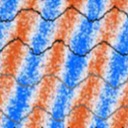
For the first time researchers have observed directly sound-driven spin waves (magnetoacoustic waves) and have revealed its nature. Results show that these magnetization waves can go up to longer distances (up to centimeters) and have larger amplitudes than the commonly known spin waves. The study, published in Phys. Rev. Lett., is carried out by researchers from the University of Barcelona (UB), the Institute of Materials Science of Barcelona (ICMAB-CSIC), and the ALBA Synchrotron, in collaboration with the Paul-Drude-Institut in Berlin.

Spin capacitors have been so far proposed theoretically and experimental realizations were either requiring very low temperature or exhibiting very small holding times for the storage “spin charge”. Remarkably, devices incorporating a hybrid MnOx/C60 interface, a particular metal oxide-fullerene heterojunction, have been shown to exhibit spin polarized charge trapping of electrons with large holding times at room temperature. The discovery, just published in Science Advances journal, is the result of a research collaboration lead by University of Leeds together with the ALBA Synchrotron, the Paul Scherrer Institute (Switzerland) and the Science and Technologies Facilities Council and the University of St Andrews, both in the UK.
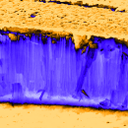
Researchers have obtained a flexible tape of an antiferromagnetic material able to store information in a more robust and secure way than the ubiquitous ferromagnetic materials. This innovation may have application where flexibility and data storage robustness are required, such as credit or identification cards.
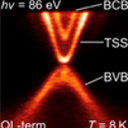
Following the experimental discovery of the first topological insulator (TI) Bi2Te3 in 2009, the discovery of MnBi4Te7 10 years later is another hallmark in this research field. This material features topological electronic order coexisting with an intrinsic net magnetization at low temperatures. The finding has been uncovered by an international collaboration including the teams from the universities and research institutes in Würzburg and Dresden, and has been corroborated by the measurements at Diamond Light Source (UK), the Advanced Light Source (US), Petra III-Desy (Germany) and the ALBA Synchrotron.
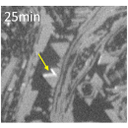
Researchers have studied the dynamic changes in the distribution of cobalt and iron atoms during the growth of mixed cobalt-iron oxides on a metallic substrate at the CIRCE beamline in the ALBA Synchrotron. This is the first time that growth at such high temperatures (1.000 ºC) has been followed in real space and real time with synchrotron radiation, providing valuable chemical information.

On 22nd March 2010, ALBA was inaugurated becoming one of the most important scientific infrastructures of Spain. Since then, its synchrotron light has been a great ally for numerous advances in a huge range of scientific fields, such as biomedicine, materials science, nanotechnology or archaeology. The ALBA Synchrotron represents a formidable return of knowledge, development and well-being for society.
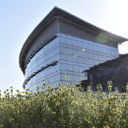
Since 13th March ALBA has been shutdown due to COVID-19 precautionary measures but is tele-open.
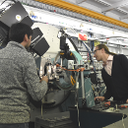
In a study published by Spanish and American scientists in the journal Carbon, samples of water-saturated activated carbon are confirmed to be efficient host materials for the formation of solidified natural gas. Researchers achieved a 100% water-to-methane hydrate conversion, which represents the most efficient storage of solidified natural gas to date. Measurements at Alba synchrotron allowed the study of the ice and hydrate formation and, for the first time, determined the structure ice takes when confined water freezes.
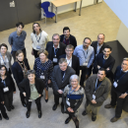
ALBA has hosted the second general assembly of the European project BEATS whose objective is to design, procure, construct and commission a beamline for hard X-ray full-field tomography at the SESAME synchrotron in Jordan.
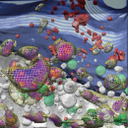
Iridium-based metallodrugs are emerging as novel tools to destroy cancer cells by disrupting their intracellular redox balance. Scientists at ALBA, IMDEA Nanociencia, ESRF and CNB-CSIC, have correlated on the same cell, for the first time, two 3D X-ray imaging techniques to image the anticancer agent at work in the cryopreserved intracellular nano-space.

From February 1st, Oscar Matilla is the new Division Head of the Computing and Controls Division of ALBA. Matilla has been appointed this position following an international selection process.
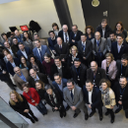
The director of the ALBA Synchrotron, Caterina Biscari, has welcomed the representatives of the Pact for the Vallès Occidental Reindustrialization and has highlighted the role of ALBA as a scientific institution of high international level, as well as its importance in the regional, Catalan and Spanish industrial network.
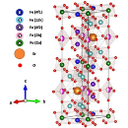
Researchers have synthesized and studied by a combination of soft X-ray techniques platelets of strontium hexaferrite allowing them to establish the differences and similarities between their synthesized nanostructures and commercial powders. Most of the experiments have been performed within a collaboration among three beamlines of the ALBA Synchrotron.
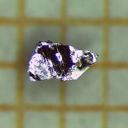
A large group of chemists, theoretical and experimental physicists from Germany, Russia, Spain and Azerbaijan has developed the first intrinsically magnetic topological material. This material is very promising for the development of antiferromagnetic spintronics, 2D magnetism and quantum transport without the need for strong external magnetic fields. Part of the experiments have been performed at the BOREAS beamline of the ALBA Synchrotron.
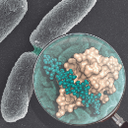
Their high division rate is one of their main weapons for antibiotic resistance. This work opens the door to the development of drugs that can block this precise mechanism. Some of the experiments have been made in the XALOC beamline at ALBA.
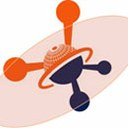
To enable researchers from European institutes to extend innovative structural biology research, the EU has invested 10 million euro to iNEXT-Discovery, through its Horizon 2020 program.
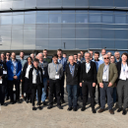
Representatives from fourteen European light sources attended the 2019 edition of the workshop this past November.
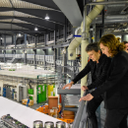
Ada Colau visited yesterday the facilities with the director of ALBA, Caterina Biscari.

A new research, published in ACS Catalysis, reports for the first time that the shape of the support plays a determinant role in the reorganization and oxidation states of bimetallic nanoparticles, which has important consequences for catalytic performance. The study concludes that ceria nanorods are a better support than nanocubes for the ethanol steam reforming process. To this end, scientists have used operando ambient pressure X-ray photoelectron spectroscopy at the NAPP endstation of CIRCE beamline at ALBA.
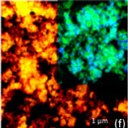
Synchrotron light from CLAESS and MISTRAL beamlines of ALBA has unveiled the central role of manganese in the limited cycle-life of lithium-ion batteries. This is the first data published obtained with the CLEAR emission spectrometer.
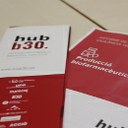
Collaboration between companies and universities in the biopharmaceutical sector was the main topic of the last Hub b30 Innovation Brunch that brought together pharmaceutical companies and researchers to discuss trends in the biopharmaceutical field, based on the case of collaboration between Kymos and the UAB to promote an Industrial Doctorate on biosimilar drugs.
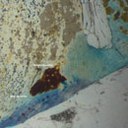
Researchers from the ICMAB-CSIC and ALBA have identified for the first time brown aerinite. This work constitutes an example of the utility of the through-the-substrate microdiffraction (tts-μXRD) technique when complex rocks need to be characterized.
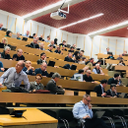
More than 180 participants from around Europe met up for the second League of European Accelerator-based Photon Sources (LEAPS) Plenary meeting. During the event, Helmut Dosch handed over the symbolic LEAPS baton to Caterina Biscari, who will take over as Chair of LEAPS in January 2020

Crocodile bones and teeth, from the existing Nile specie and also from fossils dated 70 million years ago, have been analysed at the ALBA Synchrotron. These life records offer information about crocodiles’ biology and evolution, from the Cretaceous to the present. The study is carried out thanks to the collaboration among the Autonomous University of Madrid (UAM), the University of Alcalá (UAH), the CSIC Institute of Ceramics and Glass (ICV-CSIC) and the University of Vic - Universitat Central de Catalunya (UVic-UCC). This innovative interdisciplinary scientific team gives a new approach to research, including the perspective of materials science to biology and palaeontology.
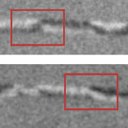
Researchers have unveiled new dynamical properties of magnetic domain walls when subjected to an electrical current in ferromagnetic cylindrical nanowires. Part of the experiments used the shadow XMCD PEEM technique at the CIRCE beamline of ALBA.
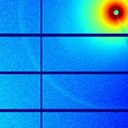
A research team has studied the efficacy of new CHO/PA polymeric nanoparticles for the sustained delivery of a drug used in breast cancer therapy. Some of the experiments have been carried out in the NCD-SWEET beamline at ALBA.

A new 6M€ grant has been launched for the Photon and Neutron Data Services (ExPaNDS) to come together and work under the European Open Science Cloud (EOSC). This ambitious project, where ALBA participates, will create enormous opportunities for scientific communities, and through their findings for humankind worldwide.

Recently five young people have joined ALBA Synchrotron’s staff thanks to the grants for the promotion of young employment and implementation of the Youth Guarantee in R+D+I 2018. During two years, they will give support to the areas of communication, experiments, accelerators, and computing.
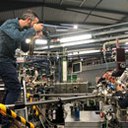
Photographer Sergio Ruiz wins the Technology and Science Prize of the #IDL2019 Photo Contest with a picture at the CIRCE beamline of the ALBA Synchrotron.
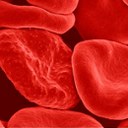
For centuries, quinoline has been an effective compound in antimalarial drugs, although no one knew its mode of action in vivo. A team led by the Weizmann Institute has discovered its mechanism in infected red blood cells in near-native conditions, by using synchrotron light techniques at ALBA, ESRF and BESSY synchrotrons. Their results are published today in PNAS.
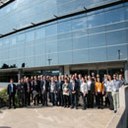
The event, organised by the ICN2, the ICMAB-CSIC and the ALBA Synchrotron last 24 and 25 October 2019, brought together more than 80 participants from companies and research centres. The event, within the framework of TNSI project, counted with the support of European regional development funds (ERDF) through the Interreg-POCTEFA programme.
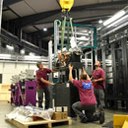
The 9th beamline of the ALBA Synchrotron is facing the last step before entering in commissioning: having assembled all the optical instruments. The beamline, co-funded with ERDF funds, will offer angle-resolved photoemission spectroscopy (ARPES technique) to official users at the end of 2020.

The ICN2, the ICMAB-CSIC and the ALBA Synchrotron organise on 24 and 25 October 2019 a workshop devoted to innovation and technology transfer between R+D centers and companies. The event is part of the TNSI project, funded with European regional development funds (ERDF) by the Interreg-POCTEFA programme.




